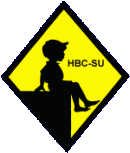
Figure 1.-- |

|
Blazers generally had three buttons, although we have seen some with two buttons. Hopefully some of our British readers will tell us more about buttons. They were in the 1980s mostly plastic buttons done to match the color of the blazers. We're less sure about earlier periods. Some schools enforced rules about how the blazer should be worn concerning the buttons. Through the 1950s this was still very common. Schools tended to want the boys to button all their buttons. It was generally the view that the boys looked smarter with their buttons buttoned. While there was some lattitude here, it was virtually aequirement that the middkd button be buttoned. A reader tells us, "I recall that, in the 1950s, we were encouraged to do up all three buttons until the age of 13 and that the middle button at least was done up as an absolute requirement. Failure to do so was met with punishment. Being buttoned up like that did restrict movement and of course, in those days there were fewer opportunities to remove jackets during the course of a day at school. Anoter reader writes, "For younger children school clothes tended not to follow fashion that closely so, while teenagers might expect looser jackets and a single vent or double vents by the post-war era, the very buttoned up look for them continued. Those pictures seemed to illustrate how they were tightly fitted."
Blazers generally had three buttons, although we have seen some with two buttons. Hopefully some of our British readers will tell us more about buttons. A reader writes, "I am not in the outfitting business but, at that age, less than the full three buttons would be very unusual I think. In the state sector of
course, more and more schools have sweatshirts or pullovers in school colours so that blazers are only discovered at 11+ on elevation to secondary school."
Blazer buttons in the 1980s mostly plastic buttons done to match the color of the blazers. We're less sure about earlier periods.
Some schools enforced rules about how the blazer should be worn concerning the buttons. Through the 1950s this was still very common. Schools tended to want the boys to button all their buttons. It was generally the view that the boys looked smarter with their buttons buttoned. While there was some lattitude here, it was virtually aequirement that the middkd button be buttoned. A reader tells us, "I recall that, in the 1950s, we were encouraged to do up all three buttons until the age of 13 and that the middle button at least was done up as an absolute requirement. Failure to do so was met with punishment. Being buttoned up like that did restrict movement and of course, in those days there were fewer opportunities to remove jackets during the course of a day at school.
Buttoning the buttons affected the fit. Anoter reader writes, "For younger children school clothes tended not to follow fashion that closely so, while teenagers might expect looser jackets and a single vent or double vents by the post-war era, the very buttoned up look for them continued. Those pictures seemed to illustrate how they were tightly fitted."
Related Blazer Pages in the Boys' Historical Web Site
[Return to the Main English school blazer construction page]
[Return to the Main English school blazer page]
[Main school uniform blazer page]
[Main blazer page]
[Australian blazers]
[New Zealand blazers]
[Scottish blazers]
Navigate the Relate Boys Historical Clothing Uniform Garment Pages
[Return to the Main school garment page]
[Blazers]
[Bookbag]
[Caps]
[Coats]
[Hose]
[Kilts]
[Pants]
[Shirts]
[Shoes]
[Smocks
[Suits]
[Seaters]
[Ties]
Navigate the Boys' Historical Clothing School Uniform Country Pages
[Main School Uniform Page]
[Main National School Uniform Page]
[Australia]
[England]
[France]
[Germany]
[Ireland]
[Italy]
[Japan]
[New Zealand]
[Poland]
[Singapore]
[Scotland]
[Singapore]
[United States]
Navigate the Boys' Historical Clothing Web Page
[Introduction]
[Activities]
[Biographies]
[Chronology]
[Clothing styles]
[Countries]
[Bibliographies]
[Contributions]
[FAQs]
[Glossary]
[Images]
[Links]
[Registration]
[Tools]
[Boys' Clothing Home]
